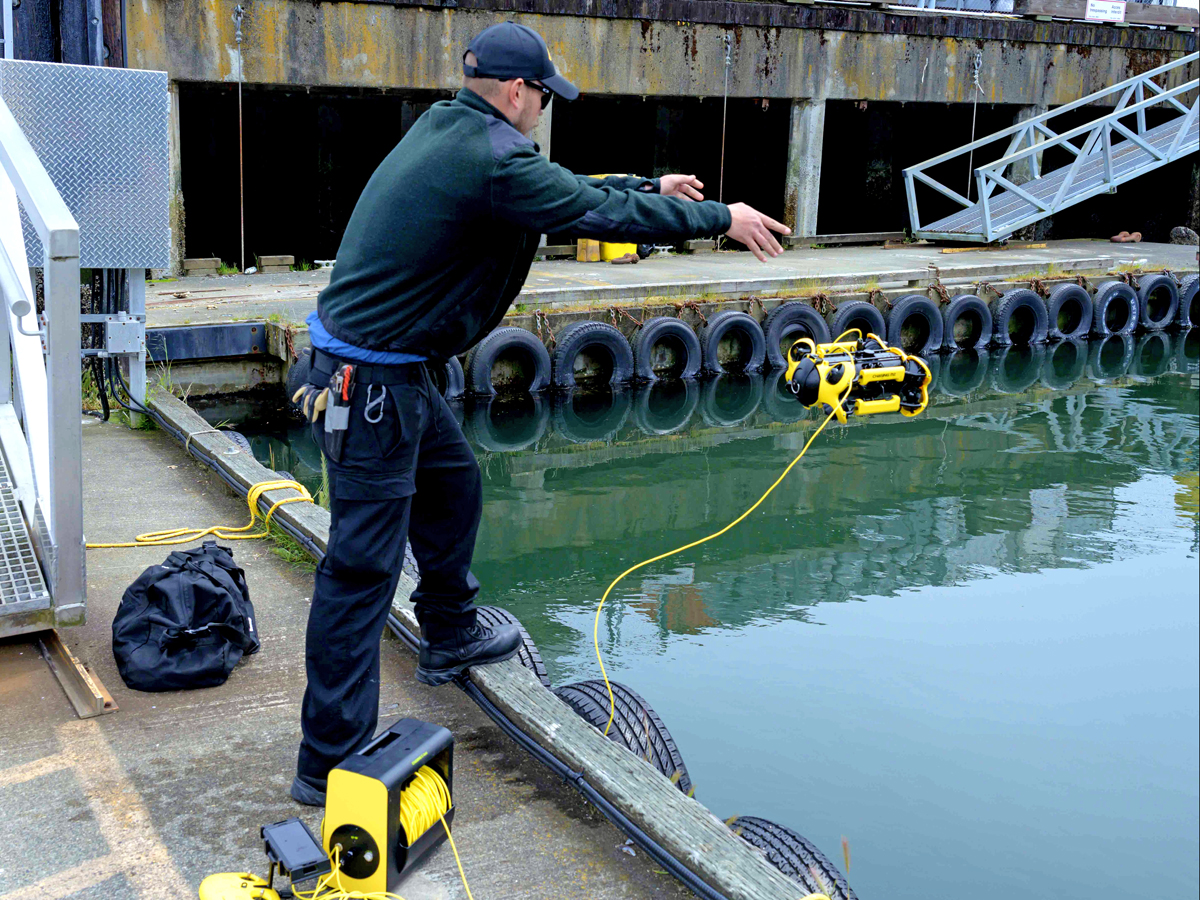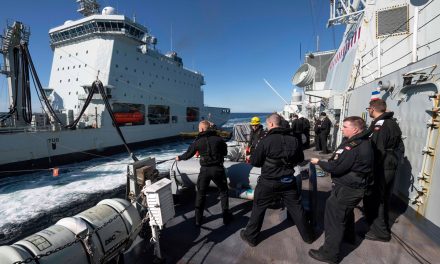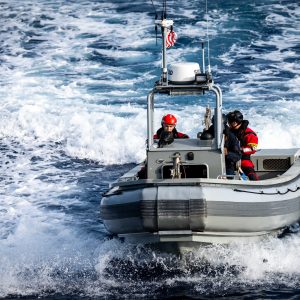
Sailor First Class Austen Webb of Patrol Craft Training Unit puts the Chasing M2 remotely operated vehicle at D Jetty. Photo: Aviator Bastien Beaucage, Canadian Armed Forces.
Peter Mallett
Staff Writer
—
An underwater drone is speeding up inspections of navy training vessels.
CFB Esquimalt’s Patrol Craft Training Unit (PCTU) is using a remotely operated underwater vehicle (ROV) to regularly monitor the subsurface conditions of eight Orca-class training vessels. The technology, which arrived in January, helps to determine any necessary repairs or preventative maintenance as an alternative to deploying a team of divers from Fleet Diving Unit (Pacific).
The technology’s benefits and its positive impact on day-to-day operations were noticed immediately, says Sailor First Class (S1) Austen Webb, Senior Boatswain Mate at PCTU.
S1 Webb says the ROV will make inspecting Orca-class vessels easier, save money and transportation costs, and reduce lost training time caused by lengthy inspections during deployments.
“Previously, Orcas would either be required to return to port in Esquimalt or have divers sent to locations to check for damage,” he said. “Quite often no damage was found.”
The ROV will improve the unit’s efficiency by deploying divers only when necessary, allowing deployed Orcas to remain on training missions longer.
Practical Uses
S1 Webb says the Chasing M2 ROV will be used primarily for surveying hulls of vessels alongside in Esquimalt. While in the open water, the drone can be used when the ship comes in contact with debris.
“These can include log strikes or when ropes or fishing lines wrap around the props or shaft line of a vessel,” he says. “During one recent log strike, a tree trunk was caught in the shafts of an Orca. After the removal of wooden object, the drone was deployed to check for damage. Miraculously, no damage was found.”
On another occasion, the ROV was brought in to conduct a survey on an Orca that was struck with a log.
“Strong currents made the survey difficult but it confirmed the suspicions that a return to Esquimalt for further inspection was necessary,” S1 Webb says.
The ROV has many other uses. PCTU members recently employed it to locate a broken jetty ladder on the sea floor near D Jetty. There are also plans to use it as a training aid to show students how to properly lay out an anchor chain on the sea floor.
Staying at Sea
Operating the device in stronger currents outside of harbours and protected inlets is one of the only drawbacks of the technology. Since the average sea currents in the Salish Sea are approximately two knots, S1 Webb says the ROV is difficult to impossible to control during high tidal streams. So, proper planning is required prior to deployment.
The response and consensus on the drone has been overwhelmingly positive. S1 Webb’s unit recently ordered four more of the devices and accessories.
“Drone technology is an aid to maintaining PCTU’s readiness and has the capacity to provide Command with a decision-making tool that could be the difference between going to sea or not going to sea, or returning to home port for a time-consuming inspection,” he says.
The M2 Remotely Operated Underwater Vehicle
- A bright yellow box about the size of a toaster oven attached to a tether.
- Weighs 4.5 kilograms and measures approximately 38 by 26 centimetres.
- Dives to 100 metres with the push of a button on a remote control device.
- Takes high-quality images and videos with its Electronic Image Stabilization camera and powerful LED lights.
- Visibility range of its camera covers distances of two to five metres, depending on lighting and water turbidity.
- Its vectored thrusters allow movements in all directions at three knots of speed.
- Sells commercially for approximately $3,000.
- Its data is stored in a removable SD card.
- Can be equipped with attachments if needed, including a robot claw, GoPro Camera, external LED lights and laser scaler to take measurements.













